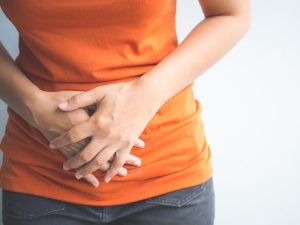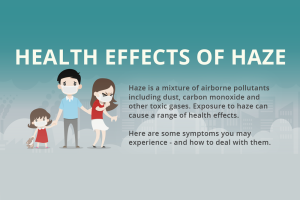Household Cleaning Safety — Navigating the Hazards of Domestic Products
In the quest for a spotless home, it’s crucial to recognise the potential health hazards posed by common household cleaning products. A growing body of research is shedding light on the risks associated with these products, particularly due to the presence of volatile organic compounds (VOCs).
These findings highlight the importance of understanding the dangers and adopting safer practices to ensure a healthy home environment. This article explores the concept of household cleaning safety, delving into scientific studies to highlight health risks associated with common household cleaners and offering practical tips to ensure safer usage.
The Hidden Dangers in Everyday Cleaning Products
A myriad of cleaning products line the shelves of stores, promising a cleaner, fresher home. However, a study published in the journal Chemosphere reveals a less known, darker side to these household staples. The study analysed 30 different cleaning products, including multipurpose and glass cleaners, air fresheners, and more, and found that they could release hundreds of hazardous volatile organic compounds (VOCs). These VOCs aren’t just fleeting components; they significantly affect the quality of indoor air, often contaminating it two to five times more than outdoor air, some estimates even suggesting up to ten times more.
This revelation is particularly concerning given the prevalence of these products in daily use. Research underscores the potential harm to respiratory health, especially among those in the cleaning industry. Workers in this sector face a 50% higher risk of developing asthma and a 43% higher risk of chronic obstructive pulmonary disease (COPD). For women in these roles, the risk extends even to an increased likelihood of lung cancer.
Equally alarming is the impact on children’s health. Exposure to certain indoor cleaners during early life stages, including in utero and infancy, is associated with heightened risks of asthma and wheezing in childhood.
Choosing Safer Alternatives for Household Cleaning Safety
In light of these findings, the question arises: how can we maintain cleanliness while safeguarding health? The answer lies in selecting safer cleaning alternatives. The Chemosphere study suggests that products labelled as “green” emit significantly fewer VOCs compared to their conventional counterparts. Specifically, green products labelled as “fragrance-free” demonstrated the lowest VOC emissions. These products emitted about half the number of VOCs as standard products and eight times fewer emissions than conventional products with fragrance.
Moreover, the European Community Respiratory Health Survey (ECRHS) study provides further evidence supporting the use of safer alternatives. It found that women who engaged in cleaning, either at home or professionally, experienced an accelerated decline in lung function. This suggests that long-term exposure to traditional cleaning agents can be detrimental to respiratory health, reinforcing the need for safer, less toxic options.
It’s not just about choosing products with fewer chemicals; it’s about a fundamental shift in our approach to cleaning. We can also turn to natural cleaning agents like white vinegar, baking soda, or lemon juice, which have been used effectively for generations. These natural alternatives, devoid of harmful chemicals, offer a safe and eco-friendly option for keeping our homes clean and our air quality healthy.
Integrating Cleaning Safety into Family Routines
For families looking to integrate safe cleaning practices into their daily routines, understanding the practical applications is key. It’s about creating a family culture where everyone, including children, is aware of the importance of using safer cleaning products and methods.
- DIY Cleaning Solutions: Involve the family in making homemade cleaners. Simple recipes using vinegar, baking soda, or lemon can be a fun and educational activity. This not only reduces exposure to harmful chemicals, but also instils a sense of responsibility and awareness in children about household safety.
- Assigning Age-Appropriate Cleaning Tasks: Assign children with safe cleaning tasks. For example, dusting with a damp cloth or cleaning windows with a vinegar-water solution. This encourages them to participate in maintaining a healthy home environment while understanding the safety aspects.
- Safe Storage and Usage: Emphasise the importance of safe storage of cleaning products. Ensure that all products, even those labelled as green, are stored out of reach of young children and pets. Teach proper usage amounts to avoid overuse, which can lead to increased chemical concentration in the home.
- Monitoring Air Quality: Make it a family habit to ventilate the home during and after cleaning. This could be as simple as opening windows or using fans to circulate fresh air, especially in rooms that are being cleaned or have just been cleaned.
- Creating a Cleaning Checklist: Develop a cleaning checklist that includes safety reminders, such as wearing gloves or masks when using certain products and ventilating the area. This checklist can serve as a guide for safe cleaning practices within the home.
Identifying and Addressing High-Risk Areas in the Home
When implementing safer cleaning practices, it’s important to identify and address areas in the home that are high-risk in terms of chemical exposure. These typically include places where cleaning products are frequently used or where people spend the most time.
- Kitchen and Bathroom: These areas often require more intensive cleaning and thus have a higher potential for hazardous chemical exposure. Opt for green or homemade cleaning solutions for surfaces, sinks, and toilets. Regularly ventilate these spaces to reduce the accumulation of harmful fumes.
- Living and Sleeping Areas: Dust and allergens can accumulate in living rooms and bedrooms, especially in fabrics and carpets. Use a damp cloth for dusting rather than sprays, and consider a vacuum with a HEPA filter to trap small particles without dispersing them into the air.
- Storage Spaces: Proper storage of cleaning products is crucial. Designate a specific, safely accessible area for storing cleaning supplies, ideally in a well-ventilated space and away from living areas. Ensure that all products are clearly labelled and that children understand they are not to access these products without adult supervision.
- Laundry Area: Laundry products can also emit harmful chemicals. Choose fragrance-free, green laundry detergents and avoid using bleach or fabric softeners that release VOCs. Ensure the laundry area is ventilated, especially if it’s a small space.
- Pet Areas: If you have pets, clean their areas with pet-safe products. Pets are often more sensitive to chemicals, and their proximity to the floor means they’re more likely to come into contact with residue from cleaning products.
- Air Quality Monitoring: Consider investing in an indoor air quality monitor. These devices can help you identify areas with poor air quality, allowing you to address these issues more effectively, whether through increased ventilation, air purifiers, or changing cleaning practices in those areas.
Effective and Safe Cleaning Techniques for Household Cleaning Safety
Adopting safe cleaning techniques is as vital as selecting the right products. These techniques not only enhance the effectiveness of cleaning but also ensure the health and safety of household members.
Dilution Is Key: When using cleaning products, especially those that are not green or natural, dilute them according to the instructions. Over-concentration can increase the risk of respiratory irritation and chemical exposure.
Microfiber Cloths and Mops: Utilise microfibre cloths and mops, which can trap dirt and dust effectively without the need for chemical cleaners. This reduces the amount of product needed and minimises airborne particles.
Sequential Cleaning: Clean from the top down – start from higher surfaces like shelves and work down to the floors. This method ensures that any dust or dirt dislodged from higher areas is captured when cleaning lower areas.
Spot Cleaning: Instead of using cleaning products over large areas, spot clean where necessary. This reduces the overall use of chemicals in the home and focuses the cleaning effort where it’s most needed.
Regular Maintenance: Regular cleaning can reduce the need for strong chemicals. Frequent dusting, wiping of surfaces, and vacuuming can keep the home clean and reduce the accumulation of dirt and grime that requires harsher products.
Natural Air Fresheners: Instead of using chemical-based air fresheners, opt for natural alternatives like baking soda to absorb odours, or essential oils for fragrance. This can significantly improve indoor air quality by reducing aerosol pollutants.
Proper Rinsing and Drying: After using any cleaning product, rinse the surface thoroughly with water, and ensure it is completely dry to prevent the formation of moulds or residue.
By implementing these techniques, households can maintain a high level of cleanliness while significantly reducing their exposure to potentially harmful chemicals.
References
- Cleaning products emit hundreds of hazardous chemicals, new study finds. (2023, September 13). Environmental Working Group. https://www.ewg.org/news-insights/news-release/2023/09/cleaning-products-emit-hundreds-hazardous-chemicals-new-study
- Svanes, I., Bertelsen, R. J., Lygre, S. H. L., Carsin, A. E., Antó, J. M., Forsberg, B., García-García, J. M., Blanco, J. A. G., Heinrich, J., Holm, M., Kogevinas, M., Urrutia, I., Leynaert, B., Moratalla, J., Moual, N. L., Lytras, T., Norbäck, D., Nowak, D., Olivieri, M., . . . Svanes, C. (2018, May 1). Cleaning at Home and at Work in Relation to Lung Function Decline and Airway Obstruction. American Journal of Respiratory and Critical Care Medicine. https://doi.org/10.1164/rccm.201706-1311oc
- Abrams, E. M. (2020, February 17). Cleaning products and asthma risk: a potentially important public health concern. Canadian Medical Association Journal. https://doi.org/10.1503/cmaj.200025
- Temkin, A. M., Geller, S. L., Swanson, S. A., Leiba, N., Naidenko, O. V., & Andrews, D. Q. (2023, November 1). Volatile organic compounds emitted by conventional and “green” cleaning products in the U.S. market. Chemosphere. https://doi.org/10.1016/j.chemosphere.2023.139570













